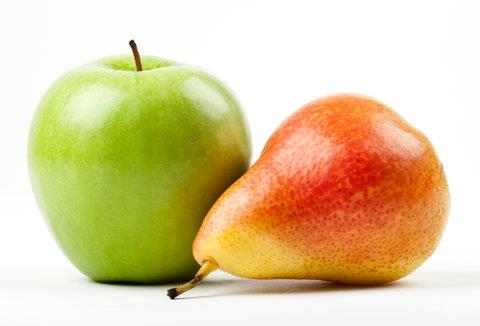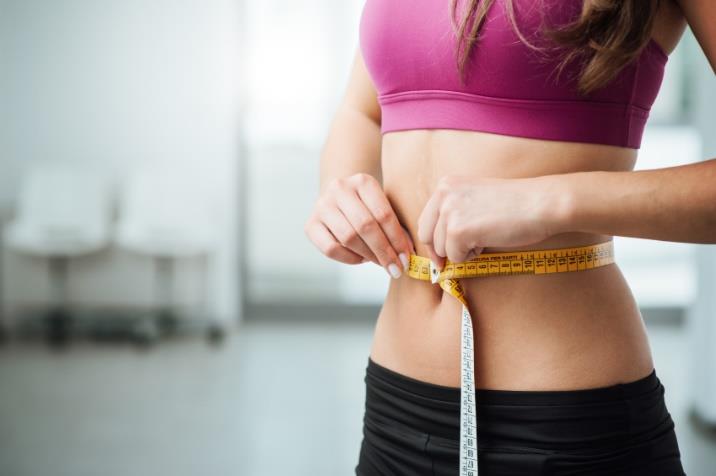You totally want to ditch the scales, don’t you?!
You may have this weird kind of relationship with your “weight”. I mean, it doesn’t define you (obviously). What you weigh can matter but only to a certain extent.
And that’s why today we are going to look at your waist circumference instead (well…you look at yours and I’ll look at mine).
Waist Circumference (AKA “Belly Fat”):
Do you remember the fruity body shape descriptions being like an “apple” or a “pear”? The apple is kinda round around the middle (you know – belly fat-ish, kinda beer belly-ish) and the pear is rounder around the hips/thighs.
THAT is what we’re talking about here.
Do you know which shape is associated with a higher risk of sleep apnoea, blood sugar issues (e.g. insulin resistance and diabetes) and heart issues (high blood pressure, blood fat, and arterial diseases).
Yup – that apple!
And it’s not because of the subcutaneous (under the skin) fat that you may refer to as a “muffin top”. The health risk is actually due to the fat inside the abdomen covering the liver, intestines and other organs.
This internal fat is called “visceral fat” and that’s where a lot of the problem actually is. It’s this “un-pinchable” fat that causes all the drama.
The reason that the visceral fat can be such a health issue is because it releases fatty acids, inflammatory compounds, and hormones that can negatively affect your blood fats, blood sugars, and blood pressure.
And the apple-shaped people tend to have a lot more of this hidden visceral fat than the pear-shaped people do.
So, this is why where your fat is stored is more important than how much you weigh.
Am I an apple or a pear?
It’s actually quite simple to find out if you’re in the higher risk category or not. The easiest way is to just measure your waist circumference with a measuring tape. You can do it right now.

Women, if your waist is over 80 cm (about 31.5 inches) you could be considered to have “abdominal obesity” and be in the higher risk category. Pregnant ladies are exempt, of course.
For men, over 94 cm (about 37 inches).
Of course, this isn’t a diagnostic tool. There are lots of risk factors for chronic diseases. Waist circumference is just one of them.
If you have concerns seek assistance from your doctor or Natural Health Practitioner!
Tips for helping reduce some belly fat:
✓ Eat more fibre. Fibre can help reduce belly fat through making you feel fuller for longer and can reduce the number of calories you absorb from your food. Some examples of high-fibre foods are brussels sprouts, flax and chia seeds, avocado, and blackberries.
✓ Add more protein to your day. Protein reduces your appetite and is
less likely to be stored as fats than other foods. It also has a high TEF (thermic effect of food) compared with fats and carbs and ensures you have enough of the amino acid building blocks for your muscles. The more muscle we have the more belly-fat we burn!
✓ Dump any added sugars. This includes the highly-processed stuff AND the non-sugar substitutes!
✓ Move more. Get some aerobic exercise. Lift some weights. Walk and take the stairs. It all adds up.
✓ Stress less. Seriously! Elevated levels in the stress hormone cortisol have been shown to increase appetite and drive abdominal fat up.
✓ Get more sleep. Try making this a priority and seeing how much better you feel (and look). If you need more tips on sleep, grab a copy of our Newsletter on exactly this topic!
Check-out this week’s recipe for Garlic Lemon Roasted Brussels Sprouts

